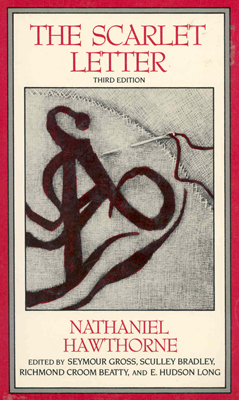After it was published in 1850, critics hailed it as initiating a distinctive American literary tradition. Ironically, it is a novel in which, in terms of action, almost nothing happens. Hawthorne's emotional, psychological drama revolves around Hester Prynne, who is convicted of adultery in colonial Boston by the civil and Puritan authorities. She is condemned to wear the scarlet letter "A" on her chest as a permanent sign of her sin. The narrative describes the effort to resolve the torment suffered by Hester and her co-adulterer, the minister Arthur Dimmesdale, in the years after their affair. In fact, the story excludes even the representation of the passionate moment which enables the entire novel. It begins at the close of Hester's imprisonment many months after her affair and proceeds through many years to her final acceptance of her place in the community as the wearer of the scarlet letter.
Hawthorne was masterful in the use of symbolism, and the scarlet letter "A" stands as his most potent symbol, around which interpretations of the novel revolve. At one interpretive pole the "A" stands for adultery and sin, and the novel is the story of individual punishment and reconciliation. At another pole it stands for America and allegory, and the story suggests national sin and its human cost. Yet possibly the most convincing reading, taking account of all others, sees the "A" as a symbol of ambiguity, the very fact of multiple interpretations and the difficulty of achieving consensus."
